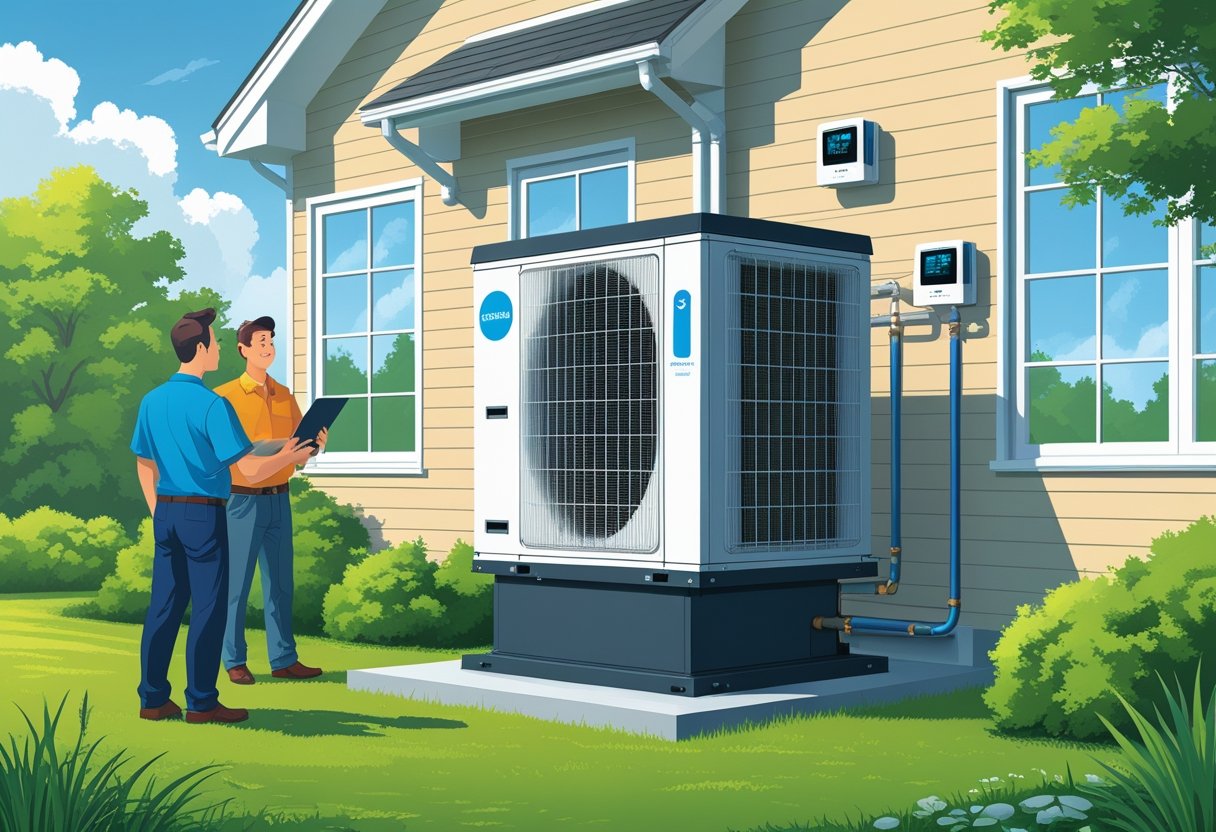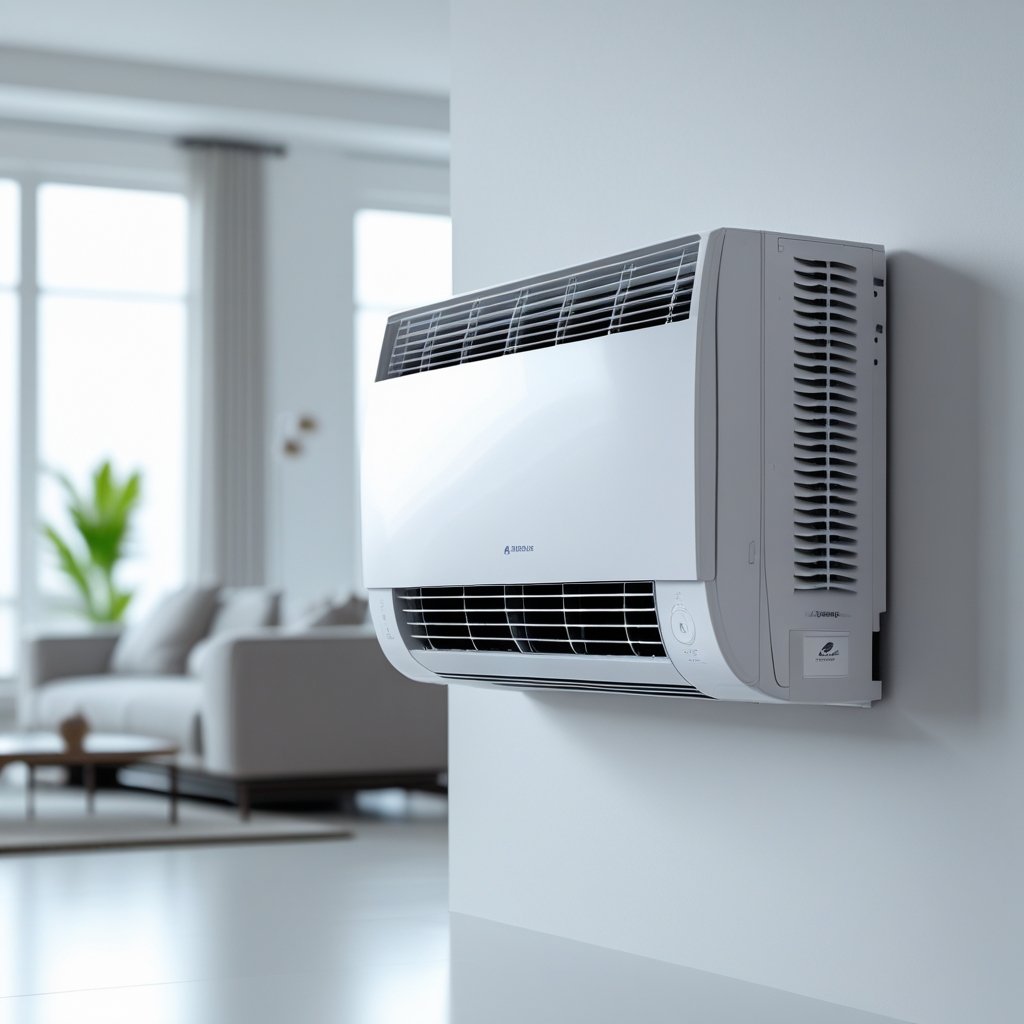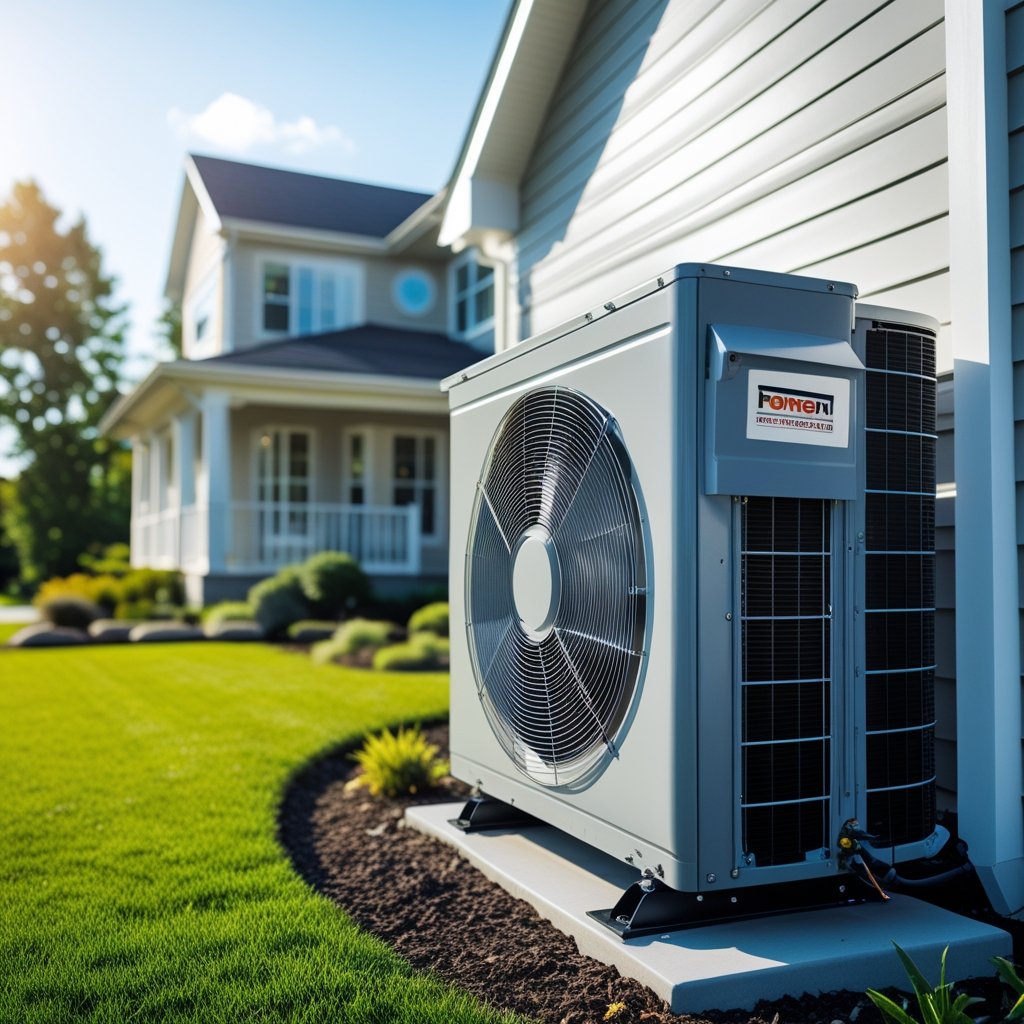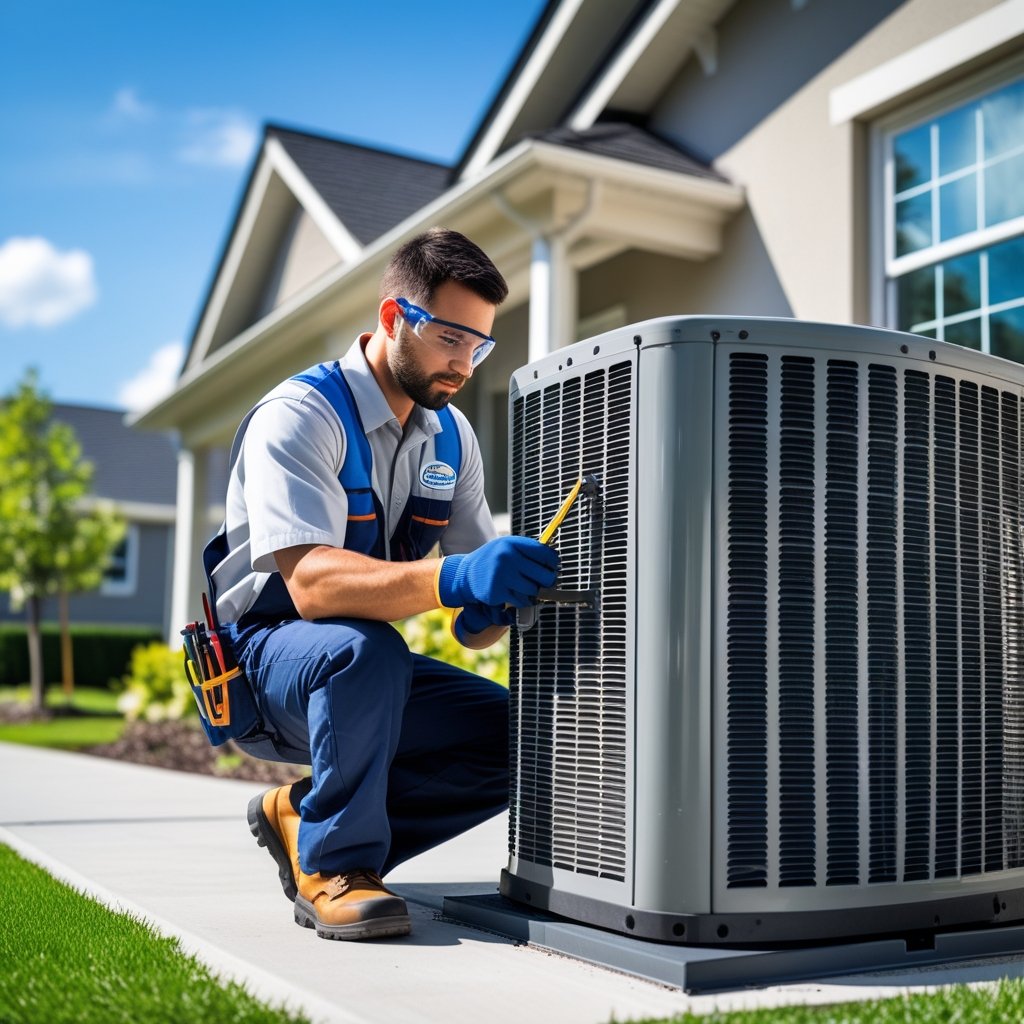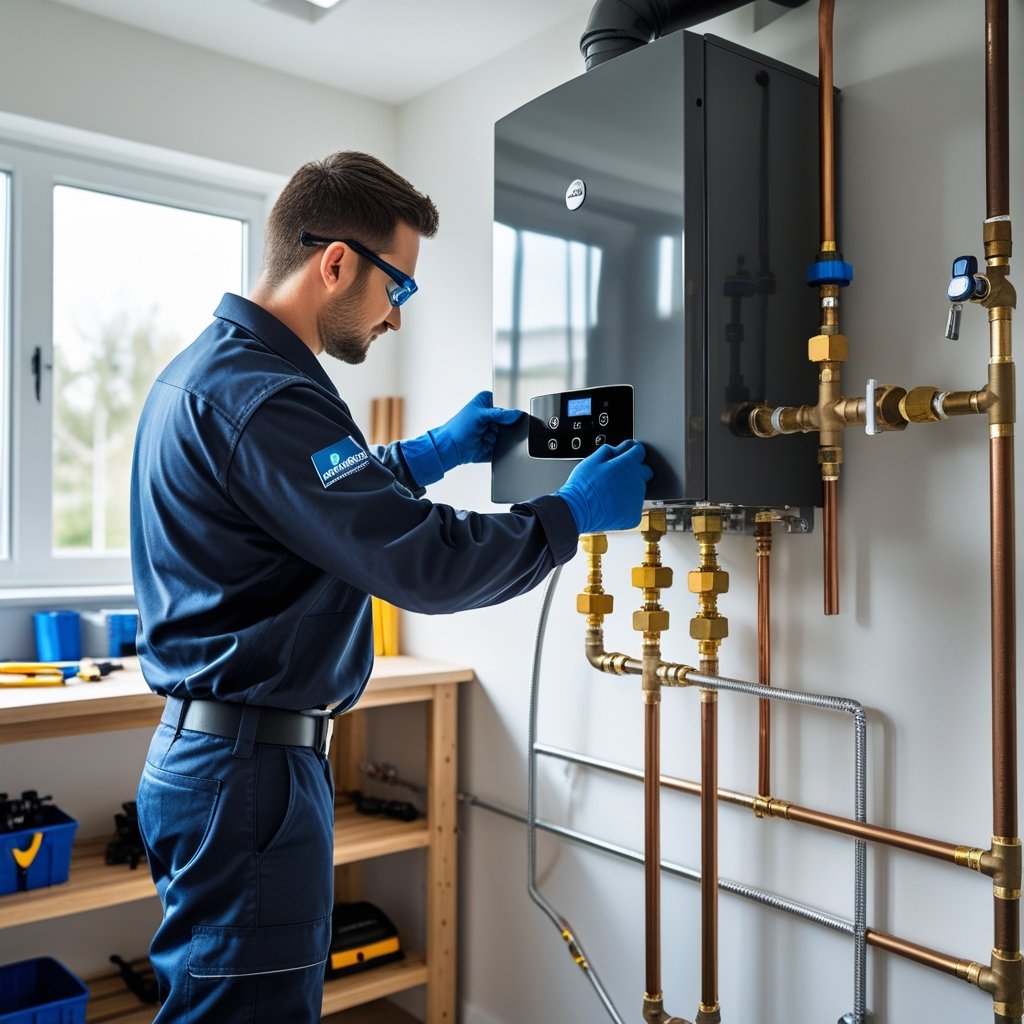If you’re scratching your head about how to tell if you have a heat pump, the simplest way is to check your heating and cooling gear or even peek at your energy bills. A heat pump heats and cools your home by moving heat around instead of making it from scratch, which sets it apart from furnaces and standard ACs. You’ll usually spot a unit outside that looks a lot like an air conditioner but, oddly enough, it runs all year.
Try listening for low buzzing or a faint click when your system flips between heating and cooling. If you’re getting uneven temps or weird airflow, that could point to a heat pump quirk. At Leo Kob Co., we’ve helped folks all over South Central Pennsylvania figure out their HVAC setups—sometimes it just takes a little honest advice. Getting a grip on what’s in your home is the first step to keeping it running well.
Understanding What a Heat Pump Is
A heat pump just moves heat from one spot to another. It warms your place in winter and cools it off in summer. Since it uses electricity to shift heat instead of making it, it’s usually more efficient than old-school heating and cooling systems.
Basic Principles of Operation
Instead of generating heat, a heat pump transfers it. In winter, it grabs warmth from the outside air and brings it in. In summer, it does the opposite—pulls heat out of your house to cool things down.
It uses refrigerant, coils, and fans to get the job done. Think of it like a fridge, but one that works both ways.
Because it’s just moving heat, not creating it, the system sips less energy. That’s good news for your wallet and your equipment.
Types of Heat Pumps
You’ll mainly find three types:
- Air-source heat pumps: These grab heat from the outside air. They’re common and work well in moderate climates.
- Ground-source (geothermal) heat pumps: These pull heat from underground, where the temperature stays steady. They’re super efficient but more expensive to put in.
- Water-source heat pumps: These use water from a well, lake, or river.
Around South Central Pennsylvania, air-source heat pumps are everywhere. You can pair them with mini-splits or hook them up to regular ductwork.
How a Heat Pump Differs From Furnaces and Air Conditioners
Furnaces burn fuel—like gas or oil—to make heat. Heat pumps just move heat, so there’s no burning anything inside your house. That makes them cleaner and, a lot of the time, cheaper to run.
Air conditioners only cool your home. Heat pumps do that, but also keep you warm in winter. So you don’t need two separate systems.
If you notice your system heats and cools from the same unit all year, there’s a good chance it’s a heat pump. Not sure? Leo Kob Co. can help you figure it out and talk you through your options.
Visual Signs You Have a Heat Pump
You can spot a heat pump by checking out a few parts of your setup inside and outside. Look at the outdoor unit, check your thermostat settings, and read any labels you find.
Outdoor Unit Features
Check for a single outdoor unit that handles both heating and cooling. Unlike a regular AC, a heat pump’s outdoor unit has a fan and coils that work both ways—pushing heat in or out, depending on the season.
You’ll probably see refrigerant lines running inside. The unit usually has a metal or plastic shell and looks like an AC condenser, but it keeps running even when it’s chilly.
If your outdoor unit hums along during cold months in South Central Pennsylvania, that’s a pretty good tip-off you’ve got a heat pump. Regular ACs don’t run when it’s cold.
Indoor Thermostat Settings
Peek at your thermostat for options like “heat,” “cool,” and “auto.” Heat pumps often add “emergency heat” or “auxiliary heat” settings for those icy days.
If you spot settings like “heat pump” or “HP,” or you can flip between heating modes, odds are you’ve got a heat pump.
Some thermostats even show energy-saving modes tailored for heat pumps. Handy for keeping bills down if you use your system smartly year-round.
Energy Labels and Manufacturer Information
Look for a label on your indoor or outdoor unit with the brand and model number. A lot of heat pump models include "HP" or "Heat Pump" in the name.
Energy guide stickers might mention both heating and cooling efficiencies, which is a dead giveaway.
If you’ve got manuals or paperwork, look for “heat pump” or anything about a reverse cycle. If you’re stumped, Leo Kob Co. techs can help you decode those labels.
How to Check Your HVAC System Type
Knowing what you’ve got helps with maintenance and repairs—and lets you know when to call in the pros. You can check paperwork, look up model numbers, or just ask a service provider. Each gives you some good clues.
Inspecting System Documentation
Dig up any manuals or paperwork from when your HVAC was put in. Labels or booklets usually spell out the system type. Heat pumps will often say "heat pump" right on the cover or in the product details.
No paper trail? Check your home files or email for old invoices or service notes. Those usually list the system type, brand, and model. Handy for maintenance or if you’re eyeing any energy rebates.
Look for phrases like “cooling and heating”—that’s a heat pump’s thing.
Model Number Look-Up
The model number is a handy shortcut. You’ll find it on a sticker or plate on the outdoor unit or indoor air handler.
Jot down the full number and search it online or on the maker’s site. That’ll tell you if it’s a heat pump or something else, like a furnace or mini-split.
Some model numbers have codes or letters that give away the type. Snap a clear pic and compare it with guides on reputable HVAC websites or send it to a local expert.
Contacting Your HVAC Service Provider
If you’re still not sure, just call your HVAC company. Pros at Leo Kob Co. can check your system remotely or swing by for a quick look.
They’ll confirm if you have a heat pump, how old it is, and whether it needs service. Leo Kob Co. knows the local equipment inside out and gives straight answers.
This route saves time and gets you the facts, especially if you’re planning repairs, upgrades, or just want to keep things running smoothly. They’ll also walk you through your system’s perks and how to keep it humming.
Identifying Heat Pump Operation at Home
You can figure out if you’ve got a heat pump by watching how your system heats and cools. Pay attention to what it does in cold weather and listen for certain sounds. These hints will show you if your setup acts differently than a regular furnace or AC.
Using Cooling and Heating Modes
Heat pumps have two main jobs: cooling in summer, heating in winter. When you set your thermostat to cool, your heat pump pulls heat out of your house—just like a regular AC.
Switch to heat, and it reverses. It grabs warmth from outside (even if it’s cold!) and brings it in. If your system switches between cooling and heating without a separate furnace or electric heater, you’re probably looking at a heat pump.
If you can control both heating and cooling from one thermostat, that’s a strong clue you’ve got a heat pump, not separate AC and furnace units.
Behavior During Cold Weather
Heat pumps keep chugging along even when it’s cold, while traditional systems might shut down or switch to backup heat. You’ll notice your system running steadily on chilly days.
If your heat pump has a backup electric heater, it’ll kick in when it gets really cold or if you need extra warmth. You might see it switch back and forth in winter.
Heat pumps are made to run efficiently in mild to moderately cold weather. If your home stays warm with steady airflow and no odd smells, you’re probably set up with a heat pump.
Listening for Reversing Valve Sounds
Inside the outdoor unit, there’s a reversing valve that changes the refrigerant flow for heating or cooling. When it switches, you might hear a soft “click” or “whoosh” outside.
You’ll usually notice this when you change the thermostat from heat to cool or the other way around. Hear that noise? That’s a classic heat pump move.
If you’re not sure what you’re hearing, Leo Kob Co. can help figure it out during an inspection or tune-up. Their crew’s been helping folks in South Central Pennsylvania since 1904—seriously, they’ve seen it all.
Common Heat Pump Features and Technology
Heat pumps come with features to keep your home comfy and efficient. Some help prevent ice buildup, others give a boost when it’s really cold, and many work with smart thermostats for better energy savings.
Defrost Mode Function
Your heat pump probably has a defrost mode. This keeps ice from building up on the outdoor unit when it’s freezing. If ice forms, it makes the system work harder. Defrost mode flips the system for a few minutes to melt the ice.
This usually happens every half hour to an hour in freezing weather and only lasts a couple of minutes. You might notice slightly warmer air or a short dip in heat output. It’s normal—and helps your heat pump run smooth and save energy.
Auxiliary Heat Backup
Some heat pumps come with auxiliary or emergency heat. This backup kicks in if the heat pump can’t keep up. It uses electric resistance heating or a gas furnace to add extra warmth.
You’ll see this run when it’s super cold or if the system struggles. Auxiliary heat costs more to run, so it only comes on when necessary. Knowing about it helps you spot if your heat pump’s acting right or needs a pro to check it out.
Smart Thermostat Compatibility
Most newer heat pumps work with smart thermostats. You can control your system from your phone or tablet, set schedules, track energy use, and get reminders for maintenance.
Smart thermostats learn your habits and tweak settings to save energy without sacrificing comfort. Pairing one with your heat pump makes it easier to keep your place cozy and your bills lower.
Comparing Heat Pumps to Alternative Home Heating Systems
If you stack heat pumps against other home heating options, you’ll notice differences in how they use energy and handle cold snaps. These details can really affect your bills, comfort, and system lifespan.
Key Differences With Electric Furnaces
Electric furnaces make heat by running electricity through coils. Heat pumps, though, move heat from outside into your home. That makes heat pumps more efficient—they’re not making heat, just moving it.
If you’ve got an electric furnace, your winter bills might be higher. A heat pump can cut those costs since it works like a fridge in reverse and needs less juice to heat your place.
Maintenance is different, too. Electric furnaces have fewer moving parts, so they need less attention. Heat pumps need a bit more TLC to keep compressors and fans in shape, especially in cold climates like South Central Pennsylvania.
Differences From Gas Furnaces
Gas furnaces burn natural gas to heat your home fast and can be cheap to run if gas prices are friendly. Heat pumps don’t burn anything—they use electricity to move heat, which can shrink your carbon footprint.
Gas furnaces shine in really cold weather, while standard heat pumps work best when it’s not freezing. For harsh winters, you might want a cold-climate heat pump or a backup heater.
Leo Kob Co. can help you weigh the options. They’re all about honest advice and fair prices, whether you’re leaning toward a heat pump or a gas furnace setup.
Next Steps If You Identify a Heat Pump
If you realize you’ve got a heat pump, keeping it in good shape and running efficiently is key. Some basic upkeep now can help you dodge costly repairs down the road. Here’s what you can do to help your heat pump work better.
Scheduling Professional Maintenance
Regular maintenance keeps your heat pump running smoothly and helps prevent breakdowns. It's smart to schedule a professional check-up at least once a year, preferably before the heating or cooling season kicks in. When a technician comes by, they'll clean the coils, check refrigerant levels, inspect electrical connections, and make sure the system's actually operating the way it should.
At Leo Kob Co., technicians keep an eye out for things like dirty filters or worn-out parts that might drag down your heat pump’s performance. Catching small issues early can save you from bigger headaches later. Honestly, just keeping up with maintenance can save energy and help your system last longer. Not exactly rocket science, but you'd be surprised how often people skip it.
Exploring Efficiency Tips
If you want to save some money on energy bills, there are a few easy ways to boost your heat pump’s efficiency. Swapping out air filters every month or so (or at least every three) helps keep airflow moving. Also, take a look at your ductwork and around the outdoor unit—if you spot any leaks or gaps, seal them up so you’re not losing heated or cooled air for no good reason.
Programmable thermostats are pretty handy; they let you set the temperature to dial back when you’re not home, which cuts down on wasted energy. And don’t forget to clear leaves, snow, or any random debris from around the outdoor unit—it really does make a difference. These little tweaks add up, and your heat pump won’t have to work overtime just to keep up.
Frequently Asked Questions
Getting familiar with your heating and cooling system actually helps a lot. When you know what to look for, you can tell if things are running right or if something’s off.
What are the visual differences between a heat pump and a regular air conditioner?
A heat pump usually sits outside your place and kind of looks like a big metal box, much like an air conditioner. The main giveaway? Heat pumps have a reversing valve and some extra piping for switching between heating and cooling. Air conditioners skip all that—they just cool, and that’s it.
Can you have a gas furnace and a heat pump in the same system?
Absolutely. Plenty of homes pair a gas furnace with a heat pump: the furnace kicks in on really cold days, and the heat pump handles things when it’s milder. The system can switch between efficient heating options depending on the weather.
How can I locate the heat pump component of my HVAC unit?
The heat pump’s usually the outdoor unit—a big metal box with a fan spinning on top. Look for refrigerant lines running to your indoor air handler or furnace. Spot an electrical disconnect box nearby? That’s another clue you’ve found the right unit.
What are the signs that indicate my heat pump is functioning properly?
If your heat pump’s working right, you’ll get steady heating or cooling and you shouldn’t hear any weird noises—no grinding, buzzing, or banging. If your energy bills are about what you’d expect for your usage, that’s a good sign too.
How can I distinguish between a heat pump and a conventional forced air heating system?
Heat pumps move heat in or out using refrigerant, so they can both cool and heat your home. Forced air systems, like gas furnaces, actually burn fuel to make heat. If you’ve got an outdoor unit that runs year-round, odds are it’s a heat pump.
Is it common for all residences to come equipped with a heat pump?
Not really. Heat pumps show up in plenty of homes, but they're definitely not everywhere. Lots of places still just use furnaces or boilers. Whether you get a heat pump often depends on where you live and how your house is built.
If you’re in South Central Pennsylvania and feeling unsure about your setup, Leo Kob Co. has folks who’ll help you figure out what you’ve got and keep it running smoothly. They’re known for solid service, fair pricing, and—thank goodness—no sneaky fees or pushy sales talk.

